






The principle charactistics of a photovoltaic system
Nominal peak generating potential
A given fundamental of any photovoltaic system is its rated or peak power, this is defined as the power that the PV system is capable of producing when operating under conditions set by international standards (standard conditions), these are:
• A solar intensity of1000 W/m2;
• A photo cell temperature of 25 °C.
It should be emphasized that the standard conditions are unlikely to be experienced during the actual operation of any photovoltaic system. The value of solar intensity of 1000 W/m2, in fact, the maximum value of radiation on the Earth's surface and this occurs only in special circumstances and for short periods during the year.
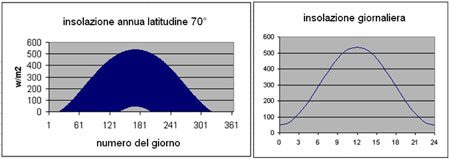
The different photovoltaic panel technologies

Figure 1 – World Market Share for the different photovoltaic technologies
The different technologies used in the construction of photovoltaic panels are many are seen in the above chart and they represent the main types being eligible to receive the GSE incentive payment:
Latitude & the level of the Sun’s energy
As can be seen from the map, at different latitudes there are different levels of solar radiation in terms of Kw / year per square metre. In Lombardy one goes from receiving 1080 kw / year per square metre up to 1800 Kw / year per square metre in Sicily.
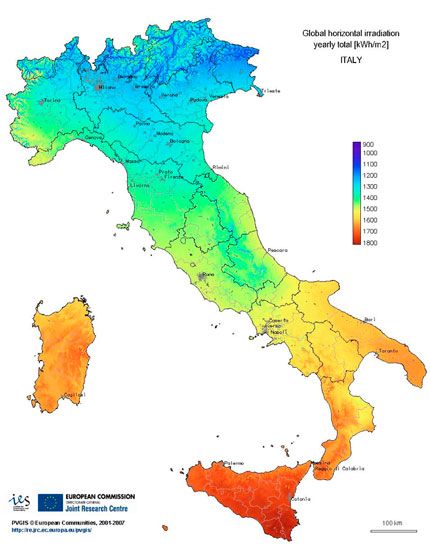
The types of surface on which they can be constructed
Totally intergrated on a roof Semi intergrated on a roof

On car parks
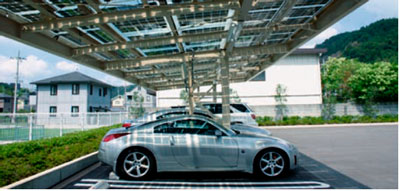
• Ground mounted systems

Ground mounted systems have the highest efficiency as the orientation and angle of the panels can be optimised.
The angle of the panels
The angle of every panel with respect to the ground influences the effective yield of the system, this is due to the effects of the average incidence of solar radiation on the panel itself.
The ideal angle for the installation of panels installed in Italy territory varies from 20 ° in the South to 30 ° in the North. The actual angle for any given installation is a very critical factor.
The orientation of the panels to the South
Panels can be mounted as much as 45° from true south in either an easterly or westerly direction, with only a maximum loss of power of 5%.
Nominal peak generating potential
A given fundamental of any photovoltaic system is its rated or peak power, this is defined as the power that the PV system is capable of producing when operating under conditions set by international standards (standard conditions), these are:
• A solar intensity of1000 W/m2;
• A photo cell temperature of 25 °C.
It should be emphasized that the standard conditions are unlikely to be experienced during the actual operation of any photovoltaic system. The value of solar intensity of 1000 W/m2, in fact, the maximum value of radiation on the Earth's surface and this occurs only in special circumstances and for short periods during the year.

The different photovoltaic panel technologies

Figure 1 – World Market Share for the different photovoltaic technologies
The different technologies used in the construction of photovoltaic panels are many are seen in the above chart and they represent the main types being eligible to receive the GSE incentive payment:
- Monocrystaline silicon
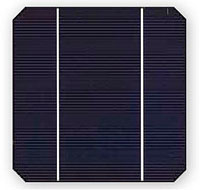 Highest efficiency, (6 - 7 mq per 1 kW picco)
Highest efficiency, (6 - 7 mq per 1 kW picco)
- Polycrystaline silicon
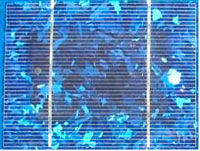 Medium efficiency, (8 - 9 mq per 1 kW picco)
Medium efficiency, (8 - 9 mq per 1 kW picco)
- Flexible thinfilm
 Lowest efficiency (10 - 20 mq per kW picco)
Lowest efficiency (10 - 20 mq per kW picco)
Latitude & the level of the Sun’s energy
As can be seen from the map, at different latitudes there are different levels of solar radiation in terms of Kw / year per square metre. In Lombardy one goes from receiving 1080 kw / year per square metre up to 1800 Kw / year per square metre in Sicily.

The types of surface on which they can be constructed
Totally intergrated on a roof Semi intergrated on a roof

On car parks

- In the case of roofs or awnings, it should be noted that the panels cannot always be mounted with the ideal orientation and inclination.
- The actual efficiency of the system is also effected by the level of intergration.
• Ground mounted systems

Ground mounted systems have the highest efficiency as the orientation and angle of the panels can be optimised.
The angle of the panels
The angle of every panel with respect to the ground influences the effective yield of the system, this is due to the effects of the average incidence of solar radiation on the panel itself.
The ideal angle for the installation of panels installed in Italy territory varies from 20 ° in the South to 30 ° in the North. The actual angle for any given installation is a very critical factor.
The orientation of the panels to the South
Panels can be mounted as much as 45° from true south in either an easterly or westerly direction, with only a maximum loss of power of 5%.


